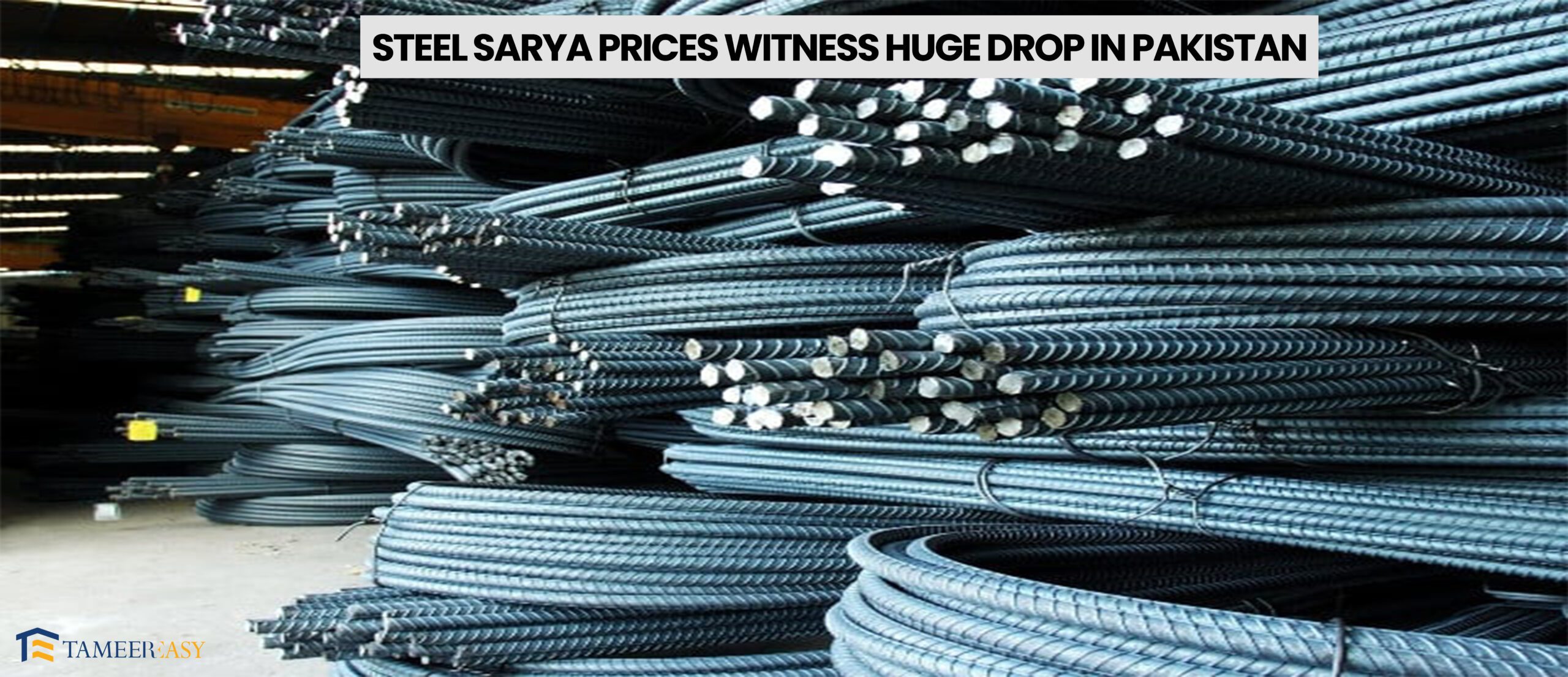Heavy Drop in Steel Sarya Rate in Pakistan – What Will be its Positive Impacts?
Steel is considered one of the most important materials for any construction tools project. Not only is it used in huge quantities, but also it ensures the strength and durability of any building. The concept of a reliable structure always remains incomplete without using good quality steel sarya.
In the recent few months, the dollar exchange rate in Pakistan went to unprecedented heights, ultimately raising the steel sarya rates in Pakistan. But for the past few weeks, the exchange rate has dropped due to the current government’s crackdown. It also results in dropped sarya prices in Pakistan.
In this blog post, we’ll inform you about the updated steel sarya rate in Pakistan and how they will impact the overall construction industry. It is undoubtedly a piece of very good news for the country’s construction sector, which will positively impact production and cost.
Steel Sarya Prices in Pakistan
Due to economic uncertainty in the country, steel rates went to their maximum heights for the past months. The price per ton of steel bars was set at PKR290,000, which caused huge havoc in the construction sector. There were many traders who were forced to stop their construction activities due to this high price.
But with the dollar exchange rate coming down, there is a considerable drop in the steel sarya prices in Pakistan. The prices have fallen from PKR290,000 to PKR240,000, which is exciting news for the industry. It will encourage the traders and private investors to start building activities with new rates.
Impacts of Dropped Steel Sarya Prices
1). Cost Efficient Construction
The dropped sarya rate in Pakistan will ensure cost-efficient construction in the country. Due to unexpectedly high prices, a large number of people were avoiding construction activities. But this huge drop of PKR50,000 will make the processes easy for traders and common people.
2). Economic Stability
The considerable drop in steel sarya rates in Pakistan will also ensure economic stability in the country. Generally, a price hike ultimately contributes towards the closure of relevant industries. Now, with the updated rates, there will be certainty in the market, ensuring the overall stability of the steel industry.
3). Investor Confidence
It is a huge economic fact that when prices go suddenly up, the market loses the investors’ confidence. It further leads to less investment and increased manufacturing costs. The sudden decrease will surely boost the investors’ confidence in the industry, gaining more investment and increased manufacturing.
4). End-Consumer Benefit
There are a large number of people who privately monitor their house or office construction activities. Many such projects stopped due to an uneven hike in sarya rates in Pakistan. But now, with dropped prices, people will start their activities, which will ultimately help other linked sectors to thrive.
Future Prediction for Steel Sarya Prices
Pakistan has become a country where there is no economic certainty. Due to the exchange rate, the IMF program, and changing governmental policies, heavy materials like steel rates keep changing. It not only affects the construction sector directly but also other linked organizations as well.
The current caretaker government, along with the help of the military establishment, has taken decisive action against all those who are storing dollars. This action has helped them drop the dollar exchange rate, which has reduced the sarya rates in Pakistan and petroleum products.
It would not be wrong to say that if such policies are carried on for a longer period, they will help the country cope with the economic uncertainty. The future prediction for the sarya prices in Pakistan is also linked to these governmental policies.
Conclusion
To sum up, we can say that the steel sarya rate in Pakistan is a crucial factor that overall decides the construction cost. The significant drop in steel prices will surely help the sector to thrive in a positive direction. If the government continues its right taxation policies, we’ll witness even more drop in the prices.



